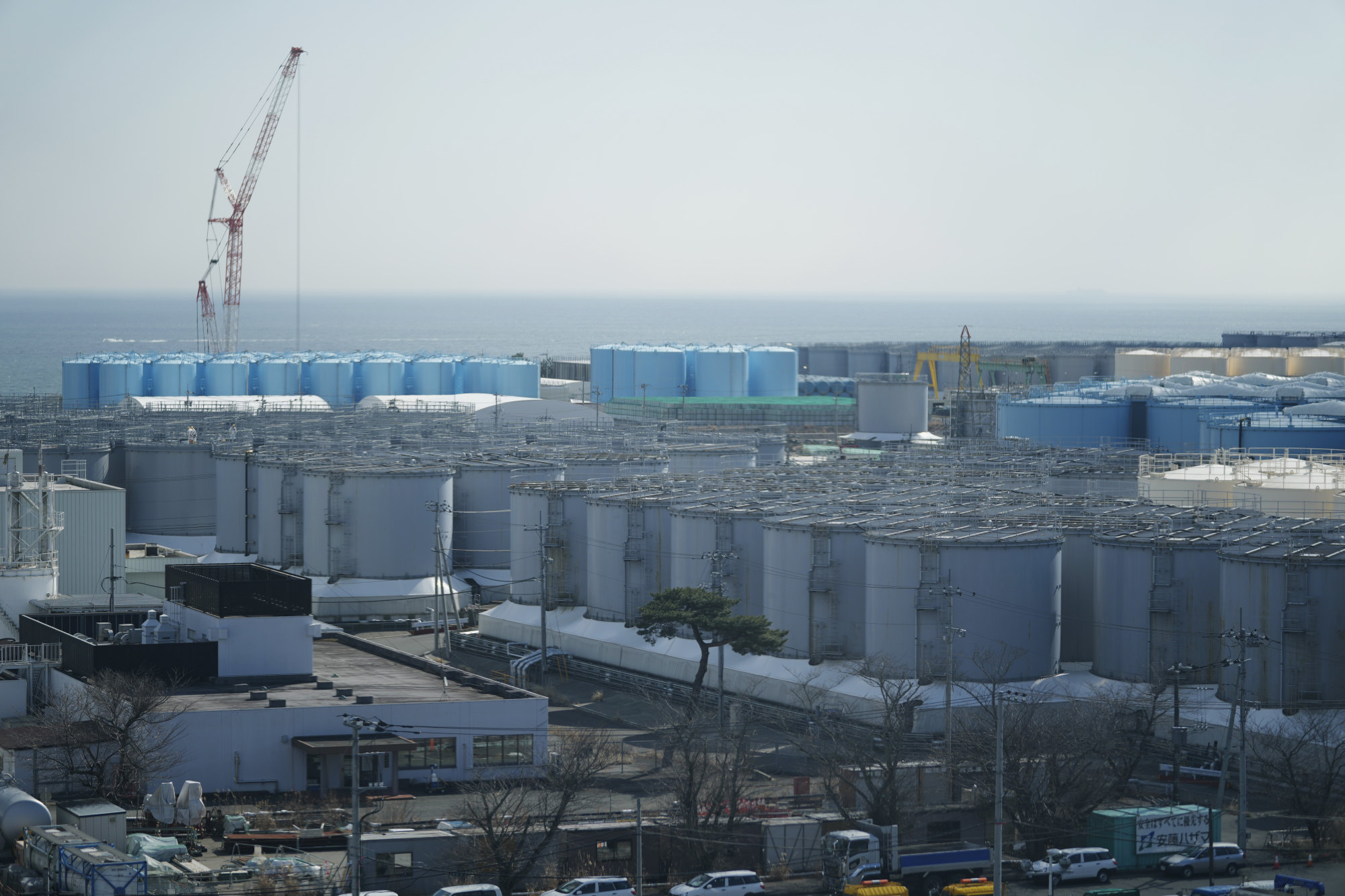
IAEA chief inspects Fukushima nuclear plant after Japan initially approves water discharge plan
- Planned discharge of treated water is expected next spring. China, South Korea, as well as fishing communities in Japan, have expressed opposition to the plan
- Treated water will be diluted with seawater to 1/40th of the concentration permitted under safety standards and released into the sea via an underwater pipeline
International Atomic Energy Agency Director General Rafael Grossi on Thursday inspected the crippled Fukushima Daiichi nuclear power plant in northeastern Japan over the planned release of treated water into the sea.
He inspected tanks storing treated water and an advanced liquid processing system that removes most radioactive materials from contaminated water except for tritium, during his first visit to the crippled plant since February 2020.
“I am very impressed with the degree of progress,” Grossi said of the decommissioning activities and preparations for the discharge, adding it was way beyond what he was expecting.

He added that the only way to earn the confidence and trust of the general public is by “being absolutely open in everything we do” and not hiding anything from them.
The planned discharge of treated water is expected to begin around next spring. China and South Korea, as well as fishing communities in Japan, which fear reputational damage, have expressed concerns and opposition to the plan.
South Korea will now take part in the IAEA-led monitoring of the planned discharge, according to an official of the country’s Foreign Ministry.
10 years after Fukushima nuclear disaster some residents can finally return home
In order for Tokyo Electric Power Company Holdings Inc., the plant operator, to begin construction of the discharge facilities, it is necessary to gain consent from the municipalities hosting the nuclear power plant, which was devastated by an enormous earthquake and tsunami in 2011.
The water treated through the ALPS system will be diluted with seawater to one-40th of the concentration permitted under Japanese safety standards and released 1 kilometre off the power plant via an underwater pipeline, according to the plan.
Water that has become contaminated after being pumped in to cool melted reactor fuel has been accumulating at the complex, also mixing with rainwater and groundwater at the site.
Fukushima disaster victims US$12 million in damages
About 1.29 million tons of treated water is currently stored on the premises of the plant, and it is inching closer to the capacity of 1.37 million tons, according to the ministry.
In response to the Japanese government’s request for help, the IAEA has pledged to support Japan before, during and after the release of the water.
The IAEA earlier this year sent a mission to the Fukushima plant to enhance transparency of the discharge plan and help gain international understanding.

